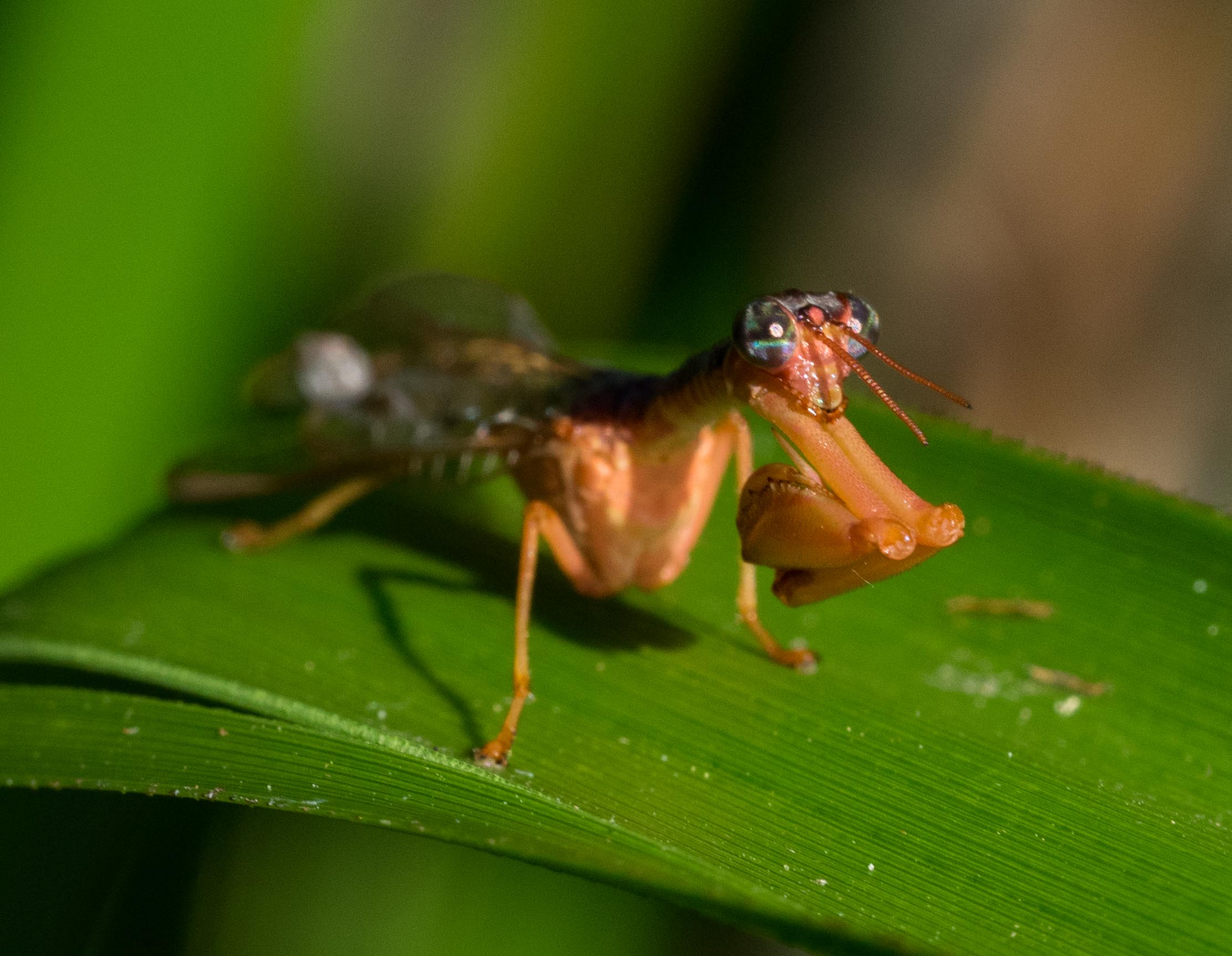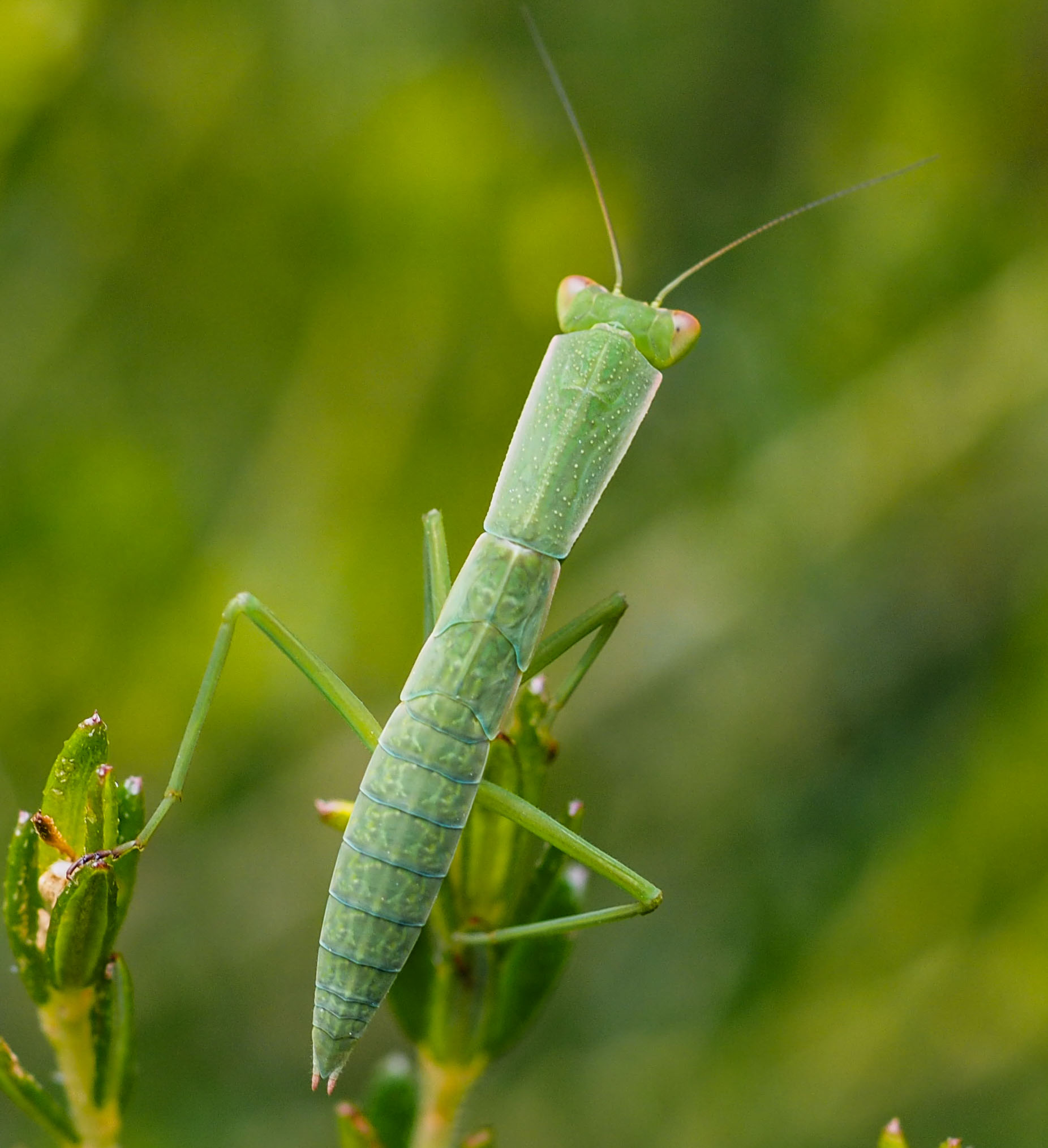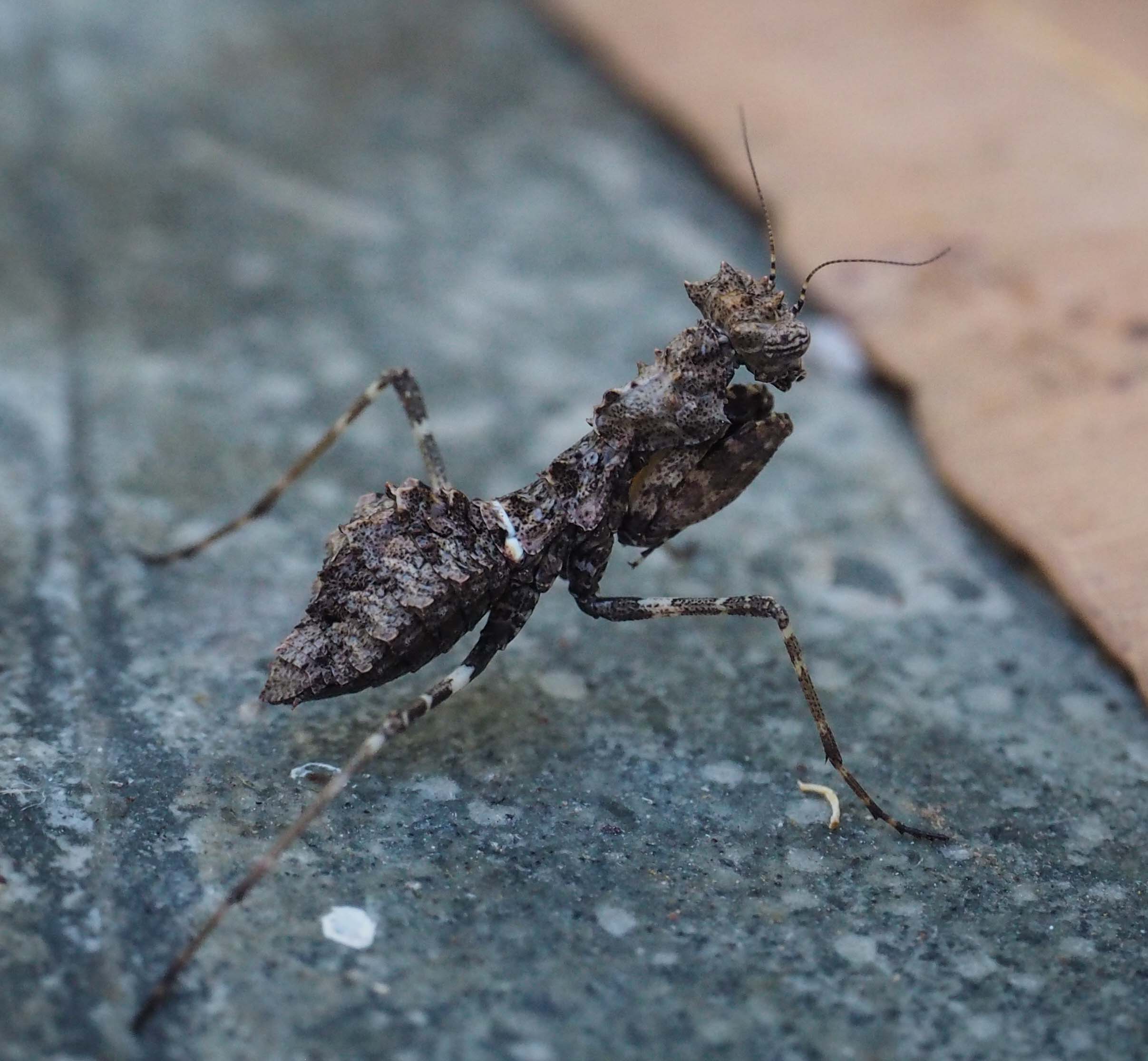Divergence and convergence

Neuroptera - commonly known as lacewings - are a small but diverse order of insects. They range in size from tiny (wingspan 5mm) to very large (over 150mm). Today, we saw for the first time one of the larger and most spectacular lacewing species, Periclystus circuiter.
When resting, Periclystus hides its magnificence very effectively. It is so well camouflaged that, from a distance, Kerri mistook it for a strangely-shaped twig or a bird dropping.
It was only when it fluttered away after she thrust out an exploratory hand that she realised what it was. Like most (but not all) lacewings, Periclystus is a slow, clumsy flyer. It apparently depends on camouflage rather than flight to avoid predators. We were easily able to trap it and take it inside for closer investigation. Flash photographs, taken as it fluttered inside a plastic box and then landed on our screen door revealed its 70mm wide wings in their full glory.
This is the second lacewing we've sighted this week. But we only realised that after revisiting our images of the first. This is the beast in question.
Based on its forelegs we had called this a praying mantis. You will perhaps excuse our mistake if you compare the image above to that below of a nymph of Orthodera ministralis, the Australian Green Mantis.
But a more careful look at our mantid imposter would have revealed its true identity. Its wings show the characteristic lacewing branching pattern. This is in fact Campion sp., a member of the lacewing family Mantispidae, named after the insects they mimic.
This is a nice example of convergence - the independent evolution of a similar trait, in this case forelimbs that can be rapidly extended to catch prey, in two groups of organisms. Lacewings and mantids are not closely related insects and only one group of lacewings possesses the mantid style of forelimbs. Convergence is the counterpoint to divergence - illustrated by the differences in the form of the two related insects Campion and Periclystus.









